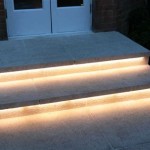Outdoor Lighting Systems Enhanced with PIR and Photocell Technology
Outdoor lighting plays a critical role in enhancing safety, security, and aesthetic appeal of residential and commercial properties. Modern outdoor lighting systems are often integrated with advanced technologies like Passive Infrared (PIR) sensors and photocells to optimize energy efficiency, responsiveness, and overall functionality. The combination of PIR and photocell technology offers a sophisticated approach to intelligent lighting control, ensuring illumination is provided only when and where it's needed.
This article explores the functionalities of PIR sensors and photocells in outdoor lighting, examining how these technologies work individually and in conjunction. It will also delve into the benefits of integrating these systems, explore different application scenarios, and discuss considerations for installation and maintenance.
Understanding Passive Infrared (PIR) Sensors
PIR sensors are electronic devices designed to detect motion by measuring changes in infrared (IR) radiation emitted by objects in their field of view. All objects with a temperature above absolute zero emit heat energy in the form of infrared radiation. PIR sensors don't actually detect heat; instead, they detect changes in the level of infrared radiation. These sensors are commonly used in security systems, automatic lighting controls, and other applications where motion detection is required.
The basic operation of a PIR sensor involves a lens (typically a Fresnel lens) that focuses the infrared radiation onto an infrared detector. This detector is usually made of a pyroelectric material, which generates an electrical charge when exposed to changes in infrared radiation. The sensor is designed to be sensitive to the difference in infrared radiation between its two halves. When an object, such as a person or vehicle, moves across the sensor’s field of view, it causes a change in the infrared radiation detected by the sensor, triggering an electrical signal. This signal is then processed by the sensor's internal circuitry, which determines whether to activate the connected device, such as an outdoor light.
PIR sensors are categorized by their detection range and angle. The detection range refers to the maximum distance at which the sensor can reliably detect motion, while the detection angle describes the width of the area covered by the sensor. PIR sensors can be configured to detect motion in a specific zone, minimizing false alarms caused by pets or other non-threatening movements. Adjustable sensitivity settings enable users to fine-tune the sensor's response to ensure optimal performance in different environments.
Key advantages of PIR sensors include their low power consumption, relatively low cost, and ability to detect motion without requiring direct contact with the object. However, PIR sensors can be susceptible to false alarms caused by sudden changes in temperature, such as sunlight passing through a window or a gust of wind. Proper installation and calibration are crucial for ensuring reliable operation and minimizing false triggers.
Deciphering Photocell Technology
A photocell, also known as a photoresistor or light-dependent resistor (LDR), is a semiconductor device whose electrical resistance varies in response to changes in light intensity. Photocells are commonly used in outdoor lighting systems to automatically switch lights on at dusk and off at dawn, conserving energy and providing illumination only when it's needed. The operation of a photocell is based on the photoelectric effect, where light photons striking the semiconductor material release electrons, increasing the conductivity of the material and decreasing its resistance.
The core component of a photocell is a light-sensitive semiconductor material, typically cadmium sulfide (CdS) or cadmium selenide (CdSe). These materials exhibit high resistance in the dark and low resistance in the presence of light. When light strikes the photocell, it generates electron-hole pairs in the semiconductor material, increasing the number of free electrons available to conduct current. This results in a decrease in the resistance of the photocell, allowing current to flow more easily through the circuit.
Photocells are connected to a control circuit that monitors the resistance of the photocell. When the light level drops below a certain threshold, the resistance of the photocell increases, triggering the control circuit to switch on the connected lights. Conversely, when the light level rises above the threshold, the resistance decreases, causing the control circuit to switch off the lights. The threshold light level is typically adjustable, allowing users to customize the switching behavior based on their specific needs and environmental conditions.
Photocells are relatively inexpensive, reliable, and easy to integrate into lighting systems. They offer an effective way to automate outdoor lighting control, reducing energy consumption and extending the lifespan of light bulbs. However, photocells can be affected by factors such as shadows, dirt, and ambient light from other sources, which can cause them to switch on or off prematurely. Proper placement of the photocell is essential to ensure accurate and reliable operation.
The Synergistic Integration of PIR and Photocell Technology
The combination of PIR sensors and photocells in outdoor lighting systems provides a sophisticated and energy-efficient approach to illumination control. By integrating these two technologies, lighting systems can respond intelligently to both motion and ambient light levels, ensuring that lights are only activated when necessary. This integrated approach offers several advantages over systems that rely solely on PIR sensors or photocells.
In a typical integrated system, the photocell monitors the ambient light level and prevents the PIR sensor from activating the lights during daylight hours. The PIR sensor then monitors the area for motion and activates the lights only when motion is detected and the ambient light level is below the set threshold. This ensures that the lights are not switched on unnecessarily during the day, conserving energy and reducing light pollution. For instance, the photocell prevents the PIR sensor from turning on the light during a cloudy afternoon, ensuring that the light only activates when it is actually dark enough to require it and when motion is detected.
This combination helps to mitigate some of the drawbacks associated with each technology individually. For example, PIR sensors can be prone to false alarms caused by temperature fluctuations or small animals. By using a photocell to disable the PIR sensor during daylight hours, these false alarms can be significantly reduced. Similarly, photocells can be affected by shadows or ambient light. The PIR sensor helps to overcome this limitation by ensuring that the lights are only activated when motion is detected, even if the photocell is temporarily affected by external factors.
The integrated system allows for greater customization and control over lighting behavior. The sensitivity of the PIR sensor and the threshold light level of the photocell can be independently adjusted to optimize performance in different environments. For example, in areas with high pedestrian traffic, the PIR sensor can be set to a lower sensitivity to reduce the frequency of activations. In areas with significant ambient light, the photocell threshold can be adjusted to ensure that the lights are not switched on prematurely.
Considerations for installation include the placement of both the PIR sensor and the photocell. The PIR sensor should be positioned to cover the desired area while minimizing the risk of false alarms. The photocell should be placed in a location that receives consistent and unobstructed sunlight exposure during the day, avoiding shadows or artificial light sources that could interfere with its operation. Regular maintenance, such as cleaning the lens of the PIR sensor and the surface of the photocell, can help to ensure optimal performance and prolong the lifespan of the system.
The use of PIR and photocell technology is becoming increasingly common in various outdoor lighting applications, including residential security lighting, pathway illumination, and commercial property lighting. As energy efficiency and environmental sustainability become increasingly important, the integration of these technologies is likely to continue to grow in popularity.

Endon Lighting Halton Ip44 Exterior Led Wall Light With Photocell Pir In Stainless Steel Fitting Style From Dusk

Tarrow Photocell Pir Ip44 Solar Outdoor Matt Black Wall Light 106467 The Lighting Super

Perry Outdoor Half Lantern With Photocell Black Litecraft

Endon Lighting Halton Ip44 Exterior Led Wall Light With Photocell Pir In Black Fitting Style From Dusk

Endon Lighting Halton Ip44 Exterior Led Wall Light With Photocell Pir In Stainless Steel Fitting Style From Dusk

Ebro Solar Powered Photocell Pir Outdoor Wall Light 96933 The Lighting Super

Geneva Outdoor Led Photocell Wall Lantern L Black Litecraft

Endon Hallam Solar Photocell Outdoor Wall Light W Pir Sensor

Asher Outdoor Wall Light With Pir Sensor Stainless Steel Bhs

Endon Lighting Halton Ip44 Exterior Led Wall Light With Photocell Pir In Black Fitting Style From Dusk
Related Posts







